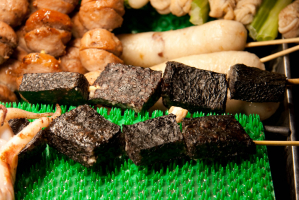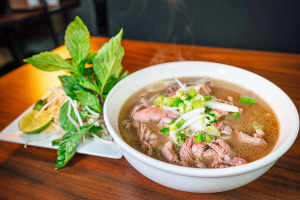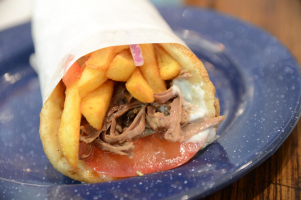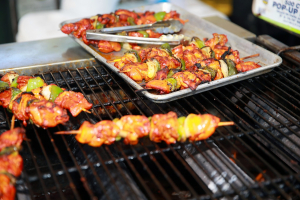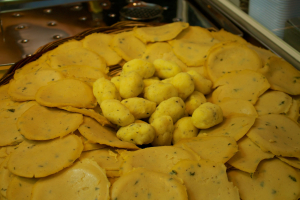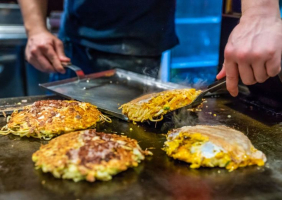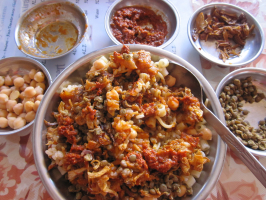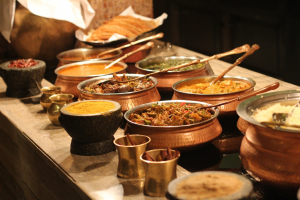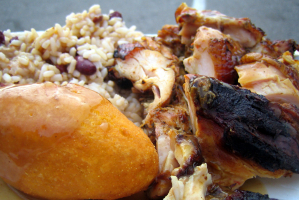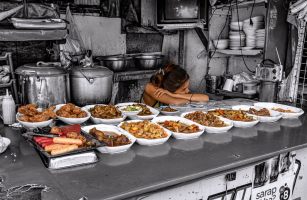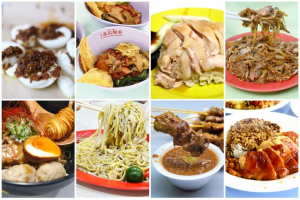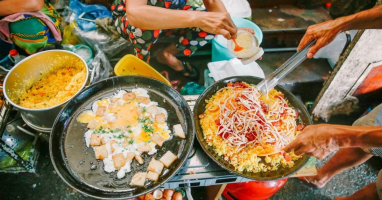Top 14 Most Popular African Street Foods
Africa's cuisine is rich in flavor and Africa's street food culture is a vivid reflection of this diversity. From Cairo to Cape Town, the continent boasts an ... read more...array of mouth-watering street foods that capture the essence of local culture, offering an exciting journey for the taste buds. On this exploration, we'll explore Top 14 Most Popular African Street Foods, each a delicious testament to the continent's culinary talent.
-
Ranked first in the Top 14 Most Popular African Street Foods Tameya, also known as falafel, is a cherished street food with a history of formation and development that dates back centuries. Originating in the Middle East, this humble yet flavorful dish has become a global favorite.
The story of Tameya traces its roots to ancient Egypt, where it was initially created as a meat substitute to accommodate religious dietary restrictions. Over time, the recipe transforms. It typically consists of ground chickpeas or fava beans blended with a medley of aromatic herbs and spices, including cumin, coriander, and garlic. These ingredients are formed into small patties and deep-fried to a crispy, golden perfection.
Tameya made its way to the streets of Egypt, becoming a popular street food. The fragrant aroma and satisfying texture of these fried patties drew in locals and visitors alike. From there, the dish's popularity spread across the Middle East, with variations emerging in different countries.
In the mid-20th century, Tameya's journey continued as it gained recognition beyond the Middle East. It was embraced by communities worldwide, making its way into people's hearts in Europe, North America, and beyond.
The adaptability of Tameya allows it to cater to diverse tastes and dietary preferences, furthering its widespread appeal. Today, Tameya symbolizes the Middle East's culinary influence on global street food.
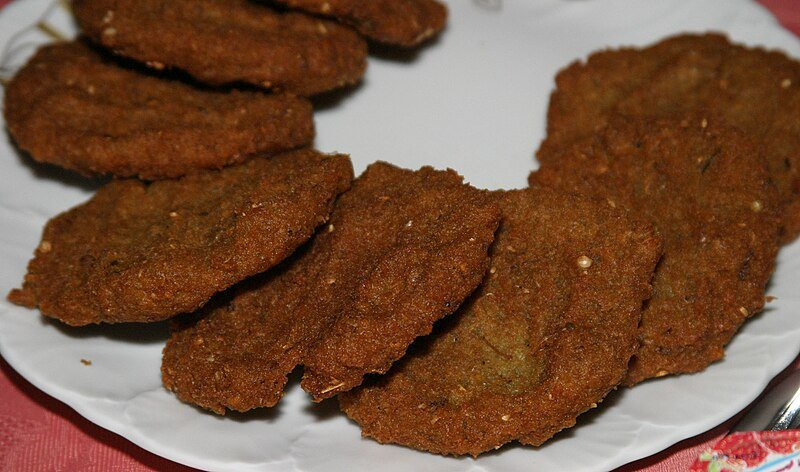
Screenshot of https://commons.wikimedia.org/wiki/File:Tameya_Karoleen_Lindberg.jpg Video by Middle Eats -
Brik, a delectable North African street food, has a fascinating history as it has made its way to the bustling streets of the African continent. Originating in Tunisia, brik has become a popular culinary delight reflecting North African and Mediterranean influences.
Brik consists of a thin pastry filled with a flavorful mixture of ingredients. The traditional filling typically includes a runny egg, capers, parsley, and sometimes tuna. This mixture is then folded into a triangular shape and deep-fried to perfection, creating a crispy outer shell with a delightful combination of textures and tastes.
The journey of Brik from Tunisia to the streets of Africa is a testament to the region's rich history of cultural exchange and trade. As merchants, explorers, and travelers crisscrossed the African continent, they brought with them not only goods but also culinary traditions. Brik, with its enticing blend of flavors and simplicity, quickly found its place in the street food scenes of various African cities.
In countries like Morocco, Algeria, and Egypt, brik has become a beloved snack enjoyed by locals and tourists alike. The dish's adaptability is one of its strengths, as street vendors often customize the fillings to cater to regional tastes, adding an extra layer of diversity to this already versatile street food.
The presence of Brik on the streets of Africa not only highlights the interconnectedness of culinary traditions but also showcases the enduring popularity of this delightful snack.
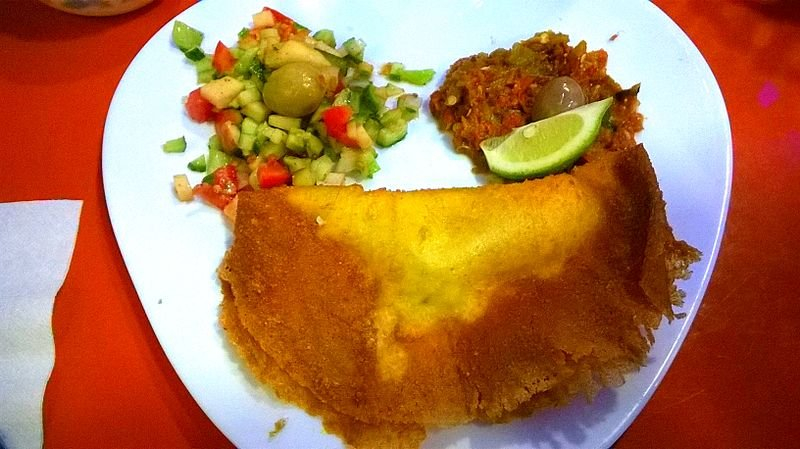
Screenshot of https://commons.wikimedia.org/wiki/File:Brik_photo_1_%D8%A8%D8%B1%D9%8A%D9%83.jpg Video by ecipes are Simple -
Accara is a traditional and flavorful dish hailing from Ghana and various neighboring regions in West Africa. It is typically crafted from black-eyed peas or black-eyed beans that have been seasoned and ground before being fried to perfection.
The taste of accara is a delightful fusion of bold and distinctive flavors. It offers a medley of natural sweetness from the beans with a subtle yet satisfying heat from the spices. The dish is often prepared with ingredients like eggplant, onions, bell peppers, and various spices such as black pepper, cayenne pepper, and aromatic herbs. The aromatic notes of sautéed onions combine harmoniously with the inherent sweetness of the beans. The spices add a layer of complexity, delivering a gentle kick of heat that enhances the overall taste.
Accara is typically served with a spicy pepper sauce or a tangy tamarind chutney, which adds another dimension to the taste profile. The sauce can intensify the heat and provide a zesty, tangy balance to the mild sweetness of the fritters.
Accara boasts a delicious flavor profile that is simultaneously sweet, savory, and mildly spicy. The combination of well-seasoned black-eyed beans and the skillful use of spices makes it a delightful treat for those seeking an authentic taste of West African cuisine.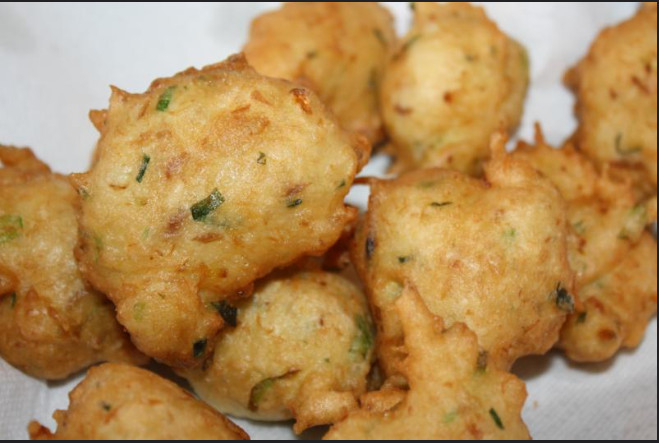
Screenshot of https://www.flickr.com/photos/caribbeanpot/6218307910 Video by Trini Cooking with Natasha -
Fried plantains, when fried, develop a natural sweetness that is irresistible. The combination of the fruit's sugar content and the caramelization during the frying process creates a mouthwatering contrast of sweet and savory flavors.
Fried plantains can be served at various stages of ripeness, offering different taste experiences. Green or unripe plantains are starchy and have a potato-like texture, while ripe plantains are softer, sweeter, and almost custard-like. This versatility caters to a wide range of preferences. Fried plantains are a typical and affordable street food, making them accessible to people from all walks of life.
Fried plantains evoke a sense of comfort and nostalgia. They are a staple in many African households, and their presence on the streets can bring a taste of home to those far from their roots. Plantains are a good source of dietary fiber, vitamins, and minerals, making them a relatively healthy street food option compared to some other choices. This nutritional aspect adds to their popularity.
Fried plantains can be seasoned with various spices, including salt, chili, or even a sprinkle of sugar, allowing for a range of flavor profiles. They can also be served plain or with accompanying sauces, offering diverse options to suit different taste preferences. Fried plantains are not just food; they represent a cultural connection and a sense of togetherness.
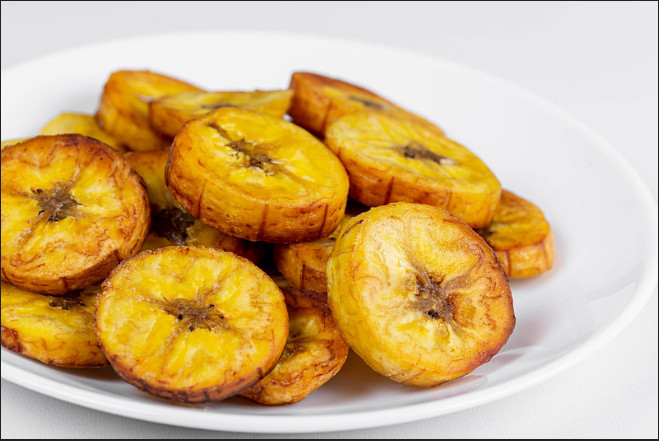
Screenshot of https://www.flickr.com/photos/30478819@N08/50335180758 Video by Edibles -
Kebda Eskandarani, also known as Alexandrian liver, is a beloved street food dish that has found its way onto the bustling streets of Africa, particularly in Egypt. Its history is intertwined with the rich culinary heritage of the region, and its development can be traced back to a blend of cultural influences.
The origins of Kebda Eskandarani can be linked to Alexandria, a port city on Egypt's Mediterranean coast. As a historical melting pot of cultures, Alexandria was a hub for trade and the exchange of culinary traditions. The dish likely emerged as a fusion of Egyptian, Mediterranean, and Middle Eastern influences, reflecting the diverse flavors and ingredients of the region.
Kebda Eskandarani's popularity can be attributed to its delicious taste and the affordability of its ingredients. It is a savory, hearty, and protein-rich street food that caters to various tastes and budgets. Vendors set up stalls in locations, including bustling markets, street corners, and near transportation hubs, making it a convenient option for people on the go.
Over time, Kebda Eskandarani has become an integral part of Egypt's street food culture, and its popularity has spread to other parts of Africa. It is a testament to the enduring influence of Alexandria's diverse culinary history and the adaptability of street food to meet the demands of hungry locals and curious travelers alike.
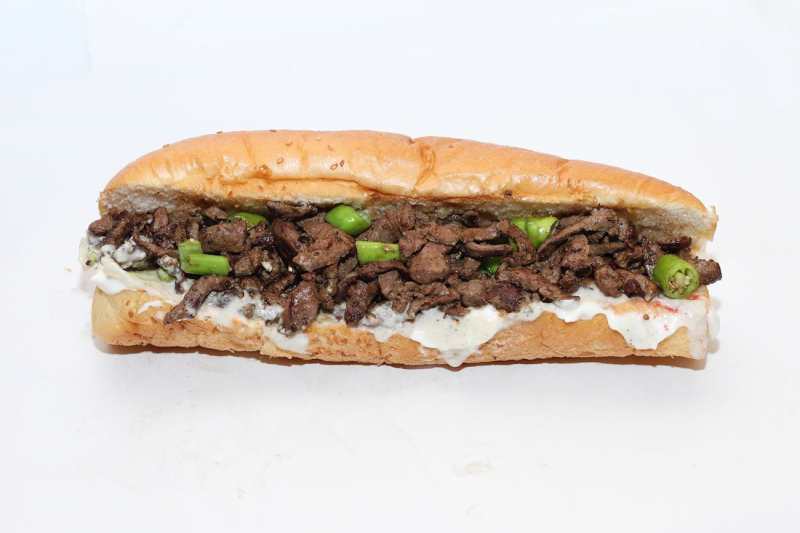
Screenshot of https://www.tasteatlas.com/kebda-eskandarani Video by Middle Eats -
The cart selling Dholl Puri on the streets of Africa is a vibrant and aromatic hub of culinary delight. Dholl Puri, a popular street food in many African countries, especially Mauritius, originates in Indian cuisine. The cart, often painted with eye-catching colors and adorned with the tempting visuals of the dish, becomes an enticing focal point for locals and tourists alike. The chef is usually a master of this traditional art, deftly preparing the delicate crepes and perfectly spiced fillings. Their expertise and efficiency ensure that each Dholl Puri is a delectable masterpiece.
The cart is equipped with an array of fresh ingredients, including split pea dholl, various chutneys (such as tamarind and chili), fresh coriander, and finely shredded vegetables like cabbage and carrots. The dholl, after being soaked and cooked to a smooth consistency, is spread evenly onto thin, soft crepes.
Dholl Puris are typically served hot and wrapped in paper or foil, ready to be handed to customers. They are often stacked neatly, with colorful garnishes of fresh coriander or pickled vegetables on the side. The cart exudes an irresistible aroma that entices passersby. The fragrant spices and sizzling sounds of the cooking process create an inviting atmosphere around the cart.
The Dholl Puri cart on African streets not only offers a delicious culinary experience but also serves as a cultural bridge, showcasing the diverse influences and flavors that have shaped the region's street food scene. It's a place where locals and tourists can savor the rich and savory taste of this beloved dish, all while immersing themselves in the vibrant street food culture of Africa.
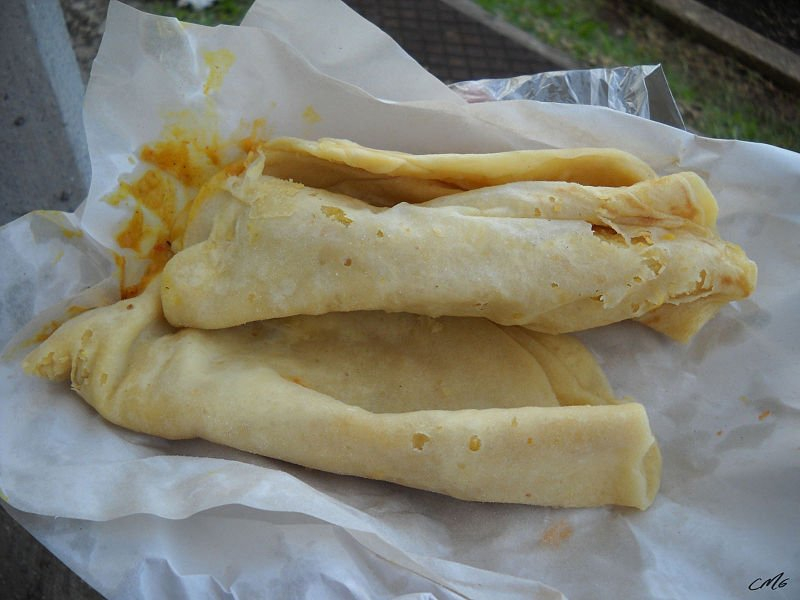
Screenshot of https://commons.wikimedia.org/wiki/File:DSCN2542_2_%285580425381%29.jpg Video by ZestyMu -
Mofo Gasy is made from local ingredients readily available in Madagascar. The primary components are rice flour, sweet rice, coconut, and sugar. This reliance on indigenous resources not only reflects the island's rich agricultural heritage but also ensures the authenticity of the dish. Mofo Gasy comes in various forms and flavors.
Incorporating coconut and local fruits in Mofo Gasy gives it a unique tropical flavor. The hint of sweetness from the ripe bananas or the coconut provides a delightful contrast to the savory dishes commonly found on African streets. Mofo Gasy is traditionally cooked over an open flame, whether on a griddle or in an open-air market, lending it a delightful smoky and earthy flavor.
Mofo Gasy has cultural significance in Madagascar. It is not just a street food but a part of the country's culinary heritage. It's often enjoyed during celebrations and family gatherings, showcasing its importance in Malagasy culture. Mofo Gasy is readily available and affordable on the streets of Madagascar.
Using local ingredients in Mofo Gasy contributes to the sustainability of Madagascar's food system, promoting the consumption of products native to the region. Mofo Gasy's special features reflect Madagascar's unique culture, natural resources, and culinary traditions. This street food not only offers a delicious taste of the island but also provides a sensory journey into the heart of this beautiful African nation.

Screenshot of https://www.marmiton.org/recettes/recette_mokary-mofo-gasy-coco_531195.aspx Video by AfricanChow -
Nyama Choma, a popular street food in Africa, particularly in East Africa, is a carnivore's delight that embodies simplicity, flavor, and communal dining. The term "Nyama Choma" translates to "roasted meat" in Swahili, and that's precisely what this dish is about.
The preparation of Nyama Choma typically involves grilling or roasting pieces of meat, often goat or beef, over open flames or hot charcoal. This method imparts a smoky flavor and gives the meat a slightly charred and crispy exterior while keeping the inside tender and succulent. The choice of meat can vary, but goat meat is a frequent favorite due to its rich and distinctive taste. Beef is also commonly used and is appreciated for its juicy tenderness.
Nyama Choma is not just about the taste; it's a social and communal experience. It's often served in large portions, making it ideal for sharing with family and friends. The meat is cut into bite-sized pieces and arranged on a communal platter. Diners can then gather around, using their fingers to pick and savor the meat, usually accompanied by side dishes like spicy sauces, vegetables, and ugali (a starchy staple similar to polenta).
This street food is more than a meal; it's a cultural tradition. It's a common sight in local markets, roadside stalls, and gatherings, where the aroma of sizzling meat draws in hungry patrons. The roasting and sharing Nyama Choma often becomes an impromptu celebration, creating an atmosphere of friendliness and togetherness.
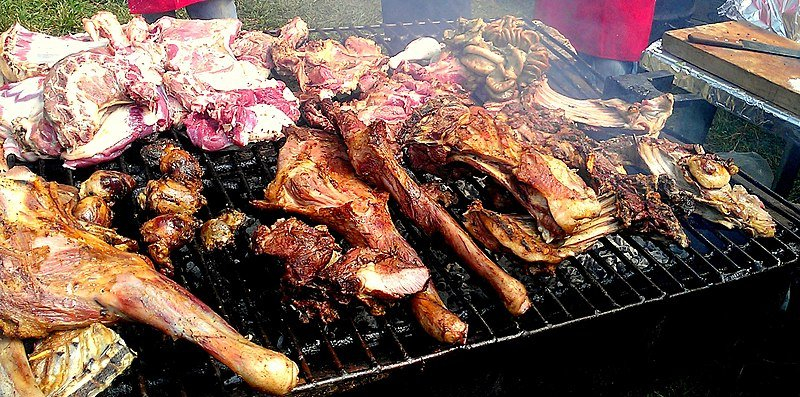
Screenshot of https://commons.wikimedia.org/wiki/File:Nyama_Choma_%28BBQ_the_Kenyan_way%29.jpg Video by MUMMY'S TASTY TREATS -
Forodhani and Dafu dishes, popular street foods in Africa, have a rich history of formation and development. Forodhani cuisine, known for its coastal influence, originated in the historic Stone Town of Zanzibar, a melting pot of cultures due to its strategic location on the Indian Ocean trade route. Over centuries, Arab, Indian, and African culinary traditions blended to create a unique street food culture.
Forodhani, a Swahili meaning "place of light," originates from the Zanzibar Archipelago. It is a vibrant night market that emerged during the era of Arab and Indian traders, who brought a diverse range of spices and culinary influences to the region. Forodhani features an array of seafood, grilled meats, and local specialties such as Zanzibari pizza, a fusion of Indian and Swahili flavors.
Dafu, on the other hand, is the Swahili word for coconut. This tropical fruit has long been a staple in East African diets. Dafu dishes include coconut-based snacks and drinks, like coconut water and coconut sweets. The coconut tree's versatility and abundance along the African coast have made it a fundamental ingredient in both savory and sweet street food offerings.
These street food traditions have not only preserved the flavors and cultural heritage of the region but have also become a popular tourist attraction. They showcase the influence of diverse cultures and the creativity of local food vendors, contributing to the rich tapestry of African street food culture.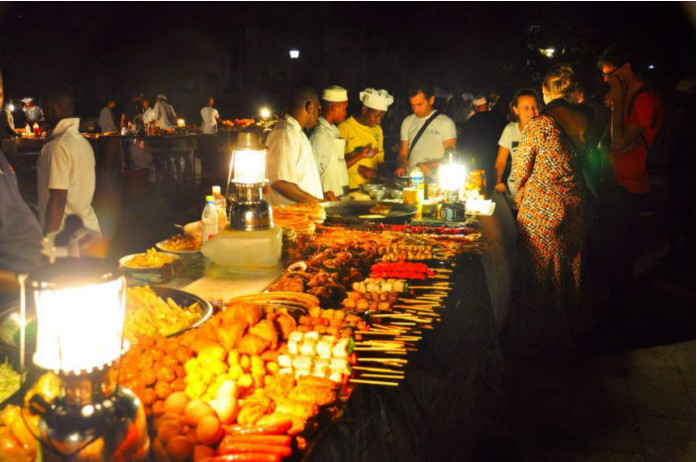
Screenshot of https://www.forksandfingers.co.uk/10-best-african-street-foods/ Video by A Guy Called Nin -
The introduction of samosas to Africa can be traced back to the Indian diaspora and historical connections between India and various African regions. Indian immigrants and traders brought with them the knowledge of preparing these triangular pastries, which were traditionally filled with spiced potatoes, peas, and sometimes meat. In Africa, they found a receptive audience eager to embrace the exotic flavors.
Over the years, samosas in Africa have evolved to cater to local tastes and ingredients. African communities started incorporating their unique twists into the traditional recipe. For example, in East Africa, you can find samosas filled with a mixture of ground meat, lentils, or vegetables and flavored with local spices.
Samosas gained immense popularity due to their affordability, portability, and delicious taste. They became a street food staple, especially in busy marketplaces, outside transportation hubs, and social gatherings. Vendors offered a variety of fillings to cater to different preferences, making samosas accessible to a wide range of people.
Samosas have had a significant influence on the local cuisine in Africa. They are often enjoyed as a snack, appetizer, or even as part of a larger meal. The combination of crispy, flaky pastry and flavorful fillings made samosas a beloved comfort food for many, transcending cultural and geographical boundaries.
Samosas continue to evolve with inventive fillings and preparations. Samosas with fillings ranging from minced meat to cheese and even sweet variations filled with fruits and nuts. Their adaptability and versatility have allowed them to remain relevant in the ever-changing street food landscape of Africa.
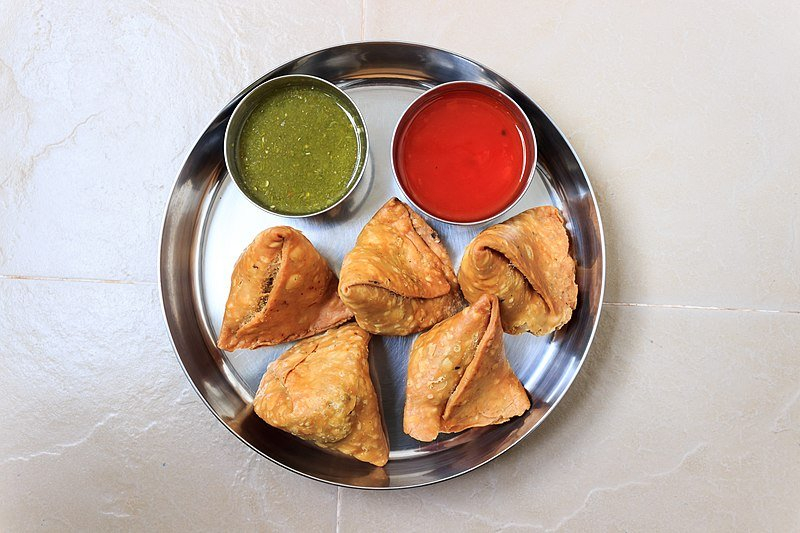
Screenshot of https://commons.wikimedia.org/wiki/File:Indian_snack_called_samosa_served_with_sweet_%26_sour_ketchup_and_spicy_chilly_chutney.JPG Video by The Cooking Foodie -
Attieke, a West African dish mainly from Côte d'Ivoire, is a smooth fermented cassava couscous used as a main dish for a variety of dishes that are delicious and soul-satisfying. Made from cassava, it undergoes a fermentation process that turns it into a light, smooth, and slightly aromatic couscous-like side dish. This facility provides the foundation to build a rich and attractive menu.
The Attieke menu showcases the rich and diverse culinary traditions of West Africa. It has various delicious side dishes, including grilled meats, spicy sauces, fresh vegetables, and flavorful stews. One of the most popular combinations is attieke with grilled chicken. This harmonious combination balances the subtle sourness of the grain with the delicious, smoky flavor of perfectly grilled poultry.
What sets the Attieke menu apart is its adaptability. It caters to various tastes, from those who like the heat of a spicy chili sauce to those who prefer milder, herbaceous options. This menu is also an example of how African street food combines both tradition and innovation, offering classic recipes passed down through generations alongside creative interpretations that reflect contemporary tastes and trends.
The Attieke menu on the streets of Africa is a sensory experience, an exploration of vibrant colors, bold flavors, and a rich tapestry of culinary culture and heritage. Each dish tells a story about Africa's diverse regions and the people's love for sharing good food and cultivating a sense of community while enjoying delicious dishes that create charm on the continent's bustling streets.
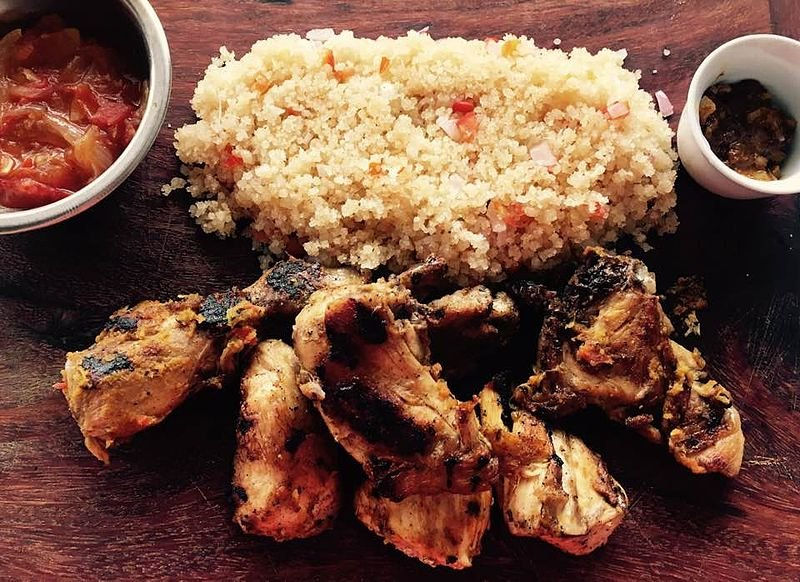
Screenshot of https://commons.wikimedia.org/wiki/File:Attieke_and_chicken.jpg Video by Dash of Dalinda -
Mson Mozambican Prawns, a delectable street food dish, has a fascinating history of formation and development on the bustling streets of Africa, particularly in Mozambique. The history of Mson Mozambican Prawns can be traced back to the colonial era when Mozambique was a Portuguese colony. During this period, the Portuguese brought culinary influences, including seafood, to the region.
Mozambican cooks and street vendors began incorporating indigenous spices, herbs, and flavors into Portuguese-inspired seafood dishes. They adapted these influences to create a unique blend of flavors and cooking techniques that catered to the local palate.
Mson Mozambican Prawns are known for their simplicity, with prawns often seasoned with aromatic spices, garlic, and lemon juice. The use of fresh, high-quality seafood is crucial to the dish's success, making it a sought-after delicacy along the coast.
Over time, Mson Mozambican Prawns have diversified in preparation. While grilling is a popular method, you can also find variations that involve sautéing, skewering, or marinating the prawns, each offering a unique twist on the classic dish.
Mson Mozambican prawns have cultural significance in Mozambique. They are often served at celebrations and gatherings, highlighting their role in bringing people together and showcasing the rich culinary heritage of the region.
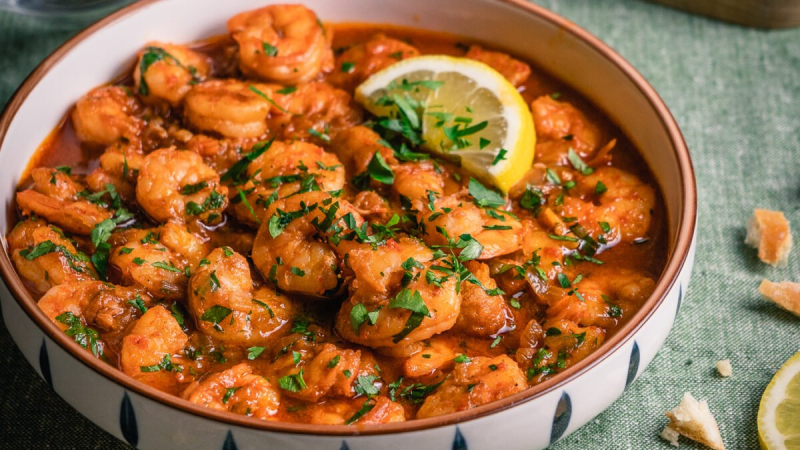
Screenshot of https://romandianmasala.com/recipe/portuguese-shrimp-mozambique-recipe/ Video by Tia Maria's Blog -
Among the myriad culinary delights found on the streets of South Africa, Bunny Chow stands out as a uniquely South African creation that has won the hearts and palates of locals and travelers alike. Bunny Chow is a dish born in Durban, a coastal city famous for its melting pot of cultures and cuisines.
At its core, Bunny Chow is a hollowed-out loaf of bread filled with a curry of your choice. The bread loaf, usually a quarter or half of a round or elongated loaf, becomes the edible vessel for the flavorful and often spicy curry. The idea of using bread as an edible bowl was a brilliant and practical invention, allowing people to savor every last bit of the delicious curry while enjoying a meal that was both filling and portable.
The origins of Bunny Chow are steeped in history, dating back to the 1940s. It is believed to have been created as an affordable and satisfying meal for Indian laborers in Durban who faced food and financial constraints. Over the years, it has evolved into a South African culinary icon, offering a fusion of Indian, Zulu, and Malay influences. Bunny Chow comes in various forms, ranging from vegetarian and chicken to lamb or beef, with curry flavors that can be mild or fiery.
The aroma of curry fills the air, and the sight of these edible bread bowls being prepared is a spectacle. The first bite is a journey into a world of flavors, with the bread soaking up the savory curry, creating a mouthwatering harmony of textures and tastes.
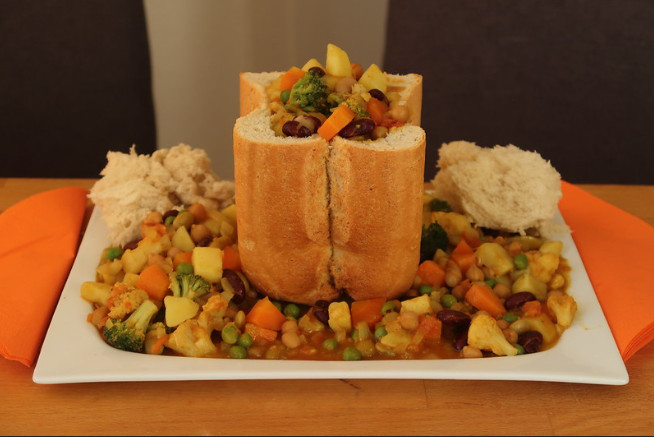
Screenshot of https://www.flickr.com/photos/19027848@N00/47638007871 Video by EatMee Recipes -
Mahjouba's flavor profile is a harmonious blend of texture and taste. Thin, crispy yet soft layers of semolina, often called "mille-feuille" or "thousand leaves", create an interesting contrast. The filling, which typically includes a mixture of cooked tomatoes, onions, and a blend of North African spices, provides a rich, savory flavor.
Overall, street food is a beloved part of African culture, and Mahjouba is no exception. The experience of buying freshly made Mahjouba from a street vendor adds an element of authenticity and excitement. It's a communal experience where locals and tourists can gather, chat, and enjoy this favorite dish. Mahjouba is designed to be portable and easy to eat on the go.
Mahjouba has deep roots in the culinary traditions of North Africa, especially Algeria and Morocco. It's not just a dish; it expresses cultural heritage and connection to the past, resonating with customers who want to experience and enjoy local culture. Customers appreciate Mahjouba's freshness.
The love for Mahjouba on the streets of Africa is driven by its delicious taste, affordability, and convenience, as well as its deep cultural roots and role as an icon of culinary culture in the area.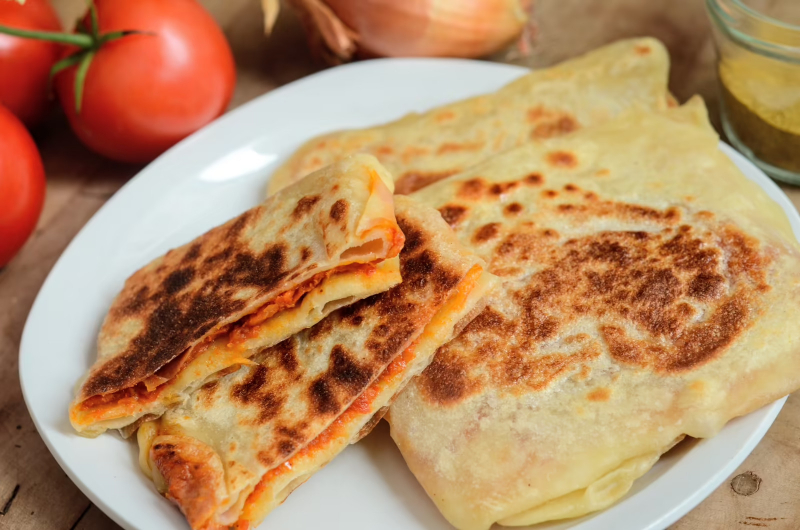
Screenshot of https://www.peko-peko.fr/recettes/mahjouba/ Video by ANTI-CHEF
















